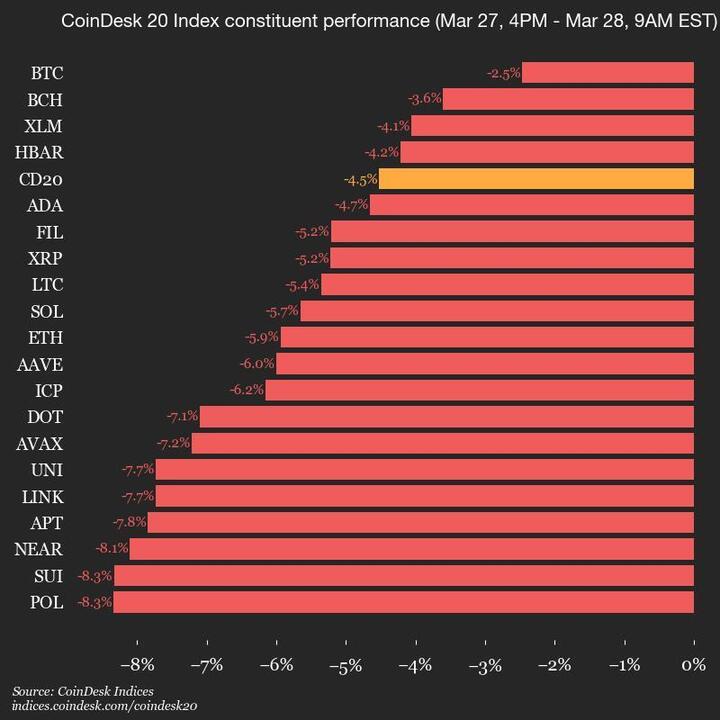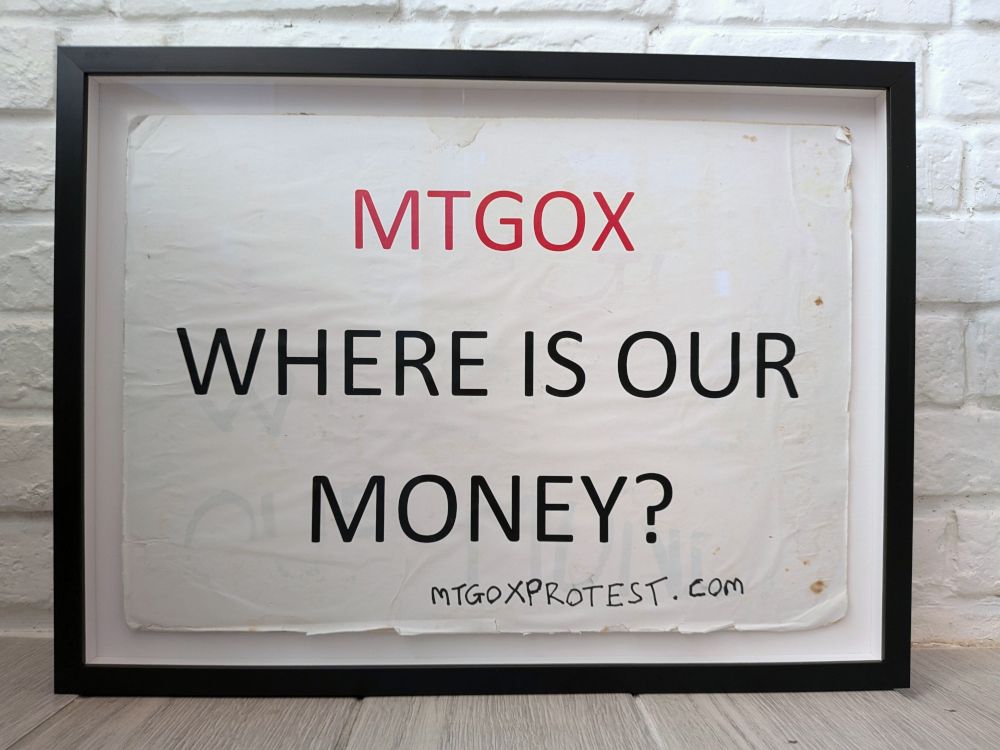It was a tough week for cryptocurrency prices, as both BTC and ETH experienced declines. The CoinDesk 20 index, which covers 80% of the market, dropped 7% since the beginning of...
Read morebtc
Is Strategy (MSTR) in trouble? Led by Executive Chairman Michael Saylor, the firm formerly known as MicroStrategy has vacuumed up 506,137 bitcoin (BTC), currently worth roughly $44 billion at BTC’s current...
Read moreIs Strategy (MSTR) in trouble?
Led by Executive Chairman Michael Saylor, the firm formerly known as MicroStrategy has vacuumed up 506,137 bitcoin (BTC), currently worth roughly $44 billion at BTC’s current price near $87,000, in the span of about five years. To the casual observer, the company seems to have a magic, unlimited pool of funds from which to draw on to buy more bitcoin. But Strategy acquired a sizable chunk of its stash by issuing billions of dollars in equity and convertible notes (debt securities which can be converted into equity under special conditions), and more recently via the issuance of preferred stock, a type of equity that provides dividends to investors.
However, the price of bitcoin has been pushed down about 20% since peaking above $109,000 two months ago. And though such swings in prices are far from unusual, the particularly aggressive recent purchases by Saylor and team mean Strategy’s average acquisition price has risen to $66,000. The company is really only one more moderate swing down in price from being in the red on its buys.
Which begs the question: Could all of Strategy’s financial wizardry end up backfiring on the company should bitcoin keep heading lower?
“It’s highly unlikely that it results in a scenario where [Strategy] has to liquidate a bunch of bitcoin because it gets margin called,” Quinn Thompson, founder of crypto hedge fund Lekker Capital, told in an interview. “For the most part, the debt is very likely to be able to be refinanced for the convertible notes. And then [the firm] started issuing this perpetual preferred stock, which never has to be repaid.”
In other words, not only is there very little chance that Strategy could suffer the kind of blowup that shook over crypto firms and projects in 2022 (like Genesis or Three Arrows Capital), but the firm has even refrained from posting its bitcoin holdings as collateral for loans — with the exception of a loan taken from Silvergate, which was repaid in 2023.
Even so, that does not necessarily mean that it’s blue skies ahead for MSTR investors, because under various scenarios, Saylor could be forced to issue more equity than the market can handle in order to maintain course.
“If he’s not paying dividends with Strategy’s cash flow, he’s going to issue more shares and wreck the stock price. But it’s no different than what he’s doing already. Every time the retail bids it up, he wrecks the stock price by issuing more shares. In the future, he will have to do that, and the flows might not go into bitcoin. They might go to repay these debtors, and it will hurt the share price,” Thompson said.
Saylor’s balancing act
Strategy currently employs three different methods for raising capital: it can issue equity, convertible notes, or preferred stock.
Issuing equity means that Strategy creates new MSTR shares, sells them on the market, and uses the proceeds to buy bitcoin. Naturally, that creates selling pressure on MSTR and can potentially push the stock downward.
Convertible notes have allowed Strategy to raise funds quickly without diluting MSTR stock. Typically, investors like these notes because they offer a solid yield, they benefit if the stock surges, and they can usually be redeemed in cash for an amount equal to the original investment in addition to interest payments. The tremendous volatility of Strategy’s convertible notes, however, has allowed the company to mostly issue them at a zero percent interest rate and still meet high demand from sophisticated market participants, who have made bank trading that volatility.
Finally, Strategy has begun deploying preferred stocks. These are instruments that tend to appeal to investors seeking lower volatility and more predictable returns through dividends. There are currently two offerings: STRK, which gives an 8% annual return; and STRF, which pays 10% annualized.
But why is Strategy issuing all of these different types of investment vehicles? The idea is to create demand for Strategy for all kinds of investors that may have different tolerances to risk, Jeffrey Park, head of Alpha Strategies at crypto asset management Bitwise, told in an interview.
“The convertible bond investors and the common equity investors were generally aligned in that they were both volatility seeking structures,” Park said. “Preferred equities are different. They actually are favored by investors who want to minimize volatility at all costs for a steady, reliable and high coupon that they feel is worth the credit risk.”
“Strategy’s capital structure is almost like a seesaw in a playground,” Park added. “The common shareholders and converts are on one side, the preferred equity holders are on the other side. As sentiment shifts, the weights move around, and it tilts the value between these securities. But no matter how the seesaw moves, its total weight — which is Strategy’s enterprise value — remains the same. It’s just a redistribution of people’s perceived value across the liabilities that exist on the company’s balance sheet.”
Risks
Even so, Strategy now finds itself in a situation where it must pay 8% dividends on STRK, 10% dividends on STRF, and a blend of 0.4% interest rate on its convertible bonds.
With Strategy’s software business providing very little cash flow, finding the funds to pay for all of these dividends might be tricky.
The company will likely need to keep issuing MSTR stock to pay the interest it owes, Thompson said. “It will hurt the share price. In the most extreme scenario, the stock could trade at a discount [from its bitcoin holdings], because he would be having to issue shares to pay interest and cover cash flow.”
“The really draconian scenario would be for the discount to get so wide, like 20% or 30%, like Grayscale’s GBTC [prior to its conversion into an ETF], that the shareholders riot and tell him to buy back shares and close the discount,” Thompson added. “Right now, he’s adding shareholder value by selling the stock at an elevated price and buying bitcoin, but in the future the reverse might be true, where the best way to add shareholder value would be to sell the bitcoin and buy the stock. But that’s quite far away.”
Saylor lost controlling voting power over the company in 2024 due to the continuous issuance of MSTR stock, meaning that the scenario above could theoretically happen, especially if activist investors decided to get involved.
Another potential risk for MSTR holders is that the 2x long Strategy exchange-traded funds (ETFs) issued by T-Rex and Defiance, MSTX and MSTU, have seen weirdly persistent demand despite the stock’s drawdown. Every time investors want to gain or increase their exposure to these ETFs, the issuers have to buy twice as many MSTR shares. The popularity of these ETFs has helped create constant buying pressure for MSTR — so far, they’ve accumulated over $3 billion in MSTR exposure.
The problem is that the music might stop someday. And if these ETFs begin to sell off their MSTR shares, the reaction on the stock price could be violent.
“I don’t know where the endless capital comes from to buy the dip. These ETFs have gotten obliterated. They’re down huge,” Thompson said. “I mean, this is not a structural move up in the demand curve that you should count on. It’s not something you should really bake into your 10-year predictions of bitcoin price, but as long as it’s existing, it’s important for bitcoin. So I’m continually amazed by it.”
- [posts_like_dislike id=721]
Is Strategy (MSTR) in a precarious situation? Under the leadership of Executive Chairman Michael Saylor, Strategy, previously known as MicroStrategy, has accumulated 506,137 bitcoin (BTC) over the course of five years,...
Read moreIs Strategy (MSTR) in a precarious situation?
Under the leadership of Executive Chairman Michael Saylor, Strategy, previously known as MicroStrategy, has accumulated 506,137 bitcoin (BTC) over the course of five years, now valued at around $44 billion at BTC’s current price of nearly $87,000. While it may seem like the company has an endless pool of funds to acquire more bitcoin, the truth is Strategy obtained a significant portion of its holdings by issuing billions of dollars in equity, convertible notes, and more recently, preferred stock.
With the recent drop in bitcoin’s price by about 20% from its peak above $109,000 two months ago, Strategy’s average acquisition price now stands at $66,000. This means that the company is just one moderate price decline away from facing losses on its purchases.
The question looming is whether Strategy’s financial maneuvers could backfire if bitcoin continues on a downward trend.
“It’s highly unlikely that it results in a scenario where [Strategy] has to liquidate a bunch of bitcoin because it gets margin called,” shared Quinn Thompson, founder of crypto hedge fund Lekker Capital. Despite the debt incurred by Strategy, Thompson believes the firm has the ability to refinance the convertible notes and preferred stock without resorting to selling off its bitcoin holdings.
Although Strategy may not face an immediate crisis like some crypto firms did in 2022, uncertainties remain for MSTR investors, particularly if Saylor has to issue more equity to sustain the company’s operations.
At present, Strategy utilizes three methods for raising capital: issuing equity, convertible notes, and preferred stock. Each of these investment vehicles caters to different types of investors with varying risk appetites, contributing to the company’s diversified approach to fundraising.
As Strategy navigates its complex capital structure, challenges lie in meeting the dividend payments for preferred stock, interest rates for convertible bonds, and a potential need for continuous issuance of MSTR stock to cover its financial obligations. This could impact the stock price and investor sentiment over time.
Furthermore, Strategy’s control over the company has weakened due to continuous stock issuance, which could potentially lead to shareholder unrest and demands for changes in strategy if certain scenarios unfold. Another risk factor for MSTR holders is the demand for 2x long Strategy exchange-traded funds (ETFs), which have generated significant buying pressure on MSTR. However, a reversal in this trend could result in a sharp decline in the stock price.
In summary, while Strategy’s current financial strategies have allowed it to accumulate a substantial bitcoin portfolio, potential risks and uncertainties loom on the horizon, necessitating careful monitoring and strategic decision-making moving forward.
- [posts_like_dislike id=723]
Our daily market update from The Parrot Press highlights the performance of leaders and laggards in the CoinDesk 20 Index. The CoinDesk 20 is currently trading at 2616.04, down 4.5% (-123.93)...
Read moreOur daily market update from The Parrot Press highlights the performance of leaders and laggards in the CoinDesk 20 Index.
The CoinDesk 20 is currently trading at 2616.04, down 4.5% (-123.93) since 4 p.m. ET on Thursday. None of the 20 assets are trading higher.
Leaders include BTC (-2.5%) and BCH (-3.6%), while laggards include POL (-8.3%) and SUI (-8.3%).
The CoinDesk 20 is a broad-based index traded on multiple platforms in several regions globally.
- [posts_like_dislike id=717]
By Angelica Jones The cryptocurrency market continues to slide as investors brace for the impact of President Donald Trump’s reciprocal tariffs, set to go into effect on April 2, coupled with...
Read moreBy Angelica Jones
The cryptocurrency market continues to slide as investors brace for the impact of President Donald Trump’s reciprocal tariffs, set to go into effect on April 2, coupled with key macroeconomic data expected later on Friday.
Bitcoin (BTC) has experienced a 2.5% drop in the last 24 hours, a relatively mild decline compared to the almost 6% slide in ether (ETH), 5.5% in XRP, and 7% in dogecoin (DOGE). The broader CoinDesk 20 Index (CD20) also dropped by 4.65%, while gold reached new highs.
The notable increase in exposure to gold has been beneficial for tokens backed by the precious metal, with CoinDesk Data’s latest stablecoin report revealing a climb to a $1.4 billion market capitalization in March.
It’s evident that traders are taking steps to reduce risk exposure ahead of the release of the U.S. personal consumption expenditure (PCE) report. This data could influence Federal Reserve interest rate decisions and impact risk appetite moving forward.
Bitcoin traders are also looking towards a record-breaking $12.2 billion in BTC options set to expire on Deribit, with a max pain point at $85,000. Despite this, implied volatility remains low as the expiry is not expected to significantly impact the market.
As the trend of derisking gains momentum, spot bitcoin exchange-traded funds (ETFs) have seen consistent inflows since mid-March, adding nearly $1 billion over the past two weeks. In contrast, spot ether ETF outflows have remained consistent, with around $115 million exiting these funds during the same period.
Looking ahead, money managers are anticipated to continue reducing risk exposure, prompting Goldman Sachs to revise its gold price target upwards for the year to $3,300 per troy ounce, with the potential to reach $4,500 in an extreme scenario.
What to Watch:
Crypto:
April 1: Metaplanet (3350) 10-for-1 stock split becomes effective.
Macro:
March 28, 8:00 a.m.: The Brazilian Institute of Geography and Statistics (IBGE) releases February unemployment rate data.
Unemployment Rate Est. 6.8% vs. Prev. 6.5%
March 28, 8:00 a.m.: Mexico’s National Institute of Statistics and Geography releases February unemployment rate data.
Unemployment Rate Est. 2.6% vs. Prev. 2.7%
March 28, 8:30 a.m.: Statistics Canada releases January GDP data.
GDP MoM Est. 0.3% vs. Prev. 0.2%
March 28, 8:30 a.m.: The U.S. Bureau of Economic Analysis releases February consumer income and expenditure data.
Stay alert for more updates!
- [posts_like_dislike id=711]
On a chilly February morning in 2014, Kolin Burges found himself standing outside the Tokyo office of Mt. Gox, holding up a hand-written cardboard sign and seeking answers from the CEO,...
Read moreOn a chilly February morning in 2014, Kolin Burges found himself standing outside the Tokyo office of Mt. Gox, holding up a hand-written cardboard sign and seeking answers from the CEO, Mark Karpeles, regarding his missing cryptocurrency.
Fast forward 11 years, and the iconic sign that symbolizes one of crypto’s biggest financial scandals is up for auction on Scarce.City, with a starting price of 4.5 BTC (equivalent to $383,000). The auction commences on Friday and concludes on April 3rd.
“In the beginning, I never imagined that the sign could become valuable,” said Burges during an interview in Hong Kong with CoinDesk. “I had thought that maybe one day I would write a book, but I never considered the sign itself to be significant. It’s fascinating how things have developed over time.”
Burges had flown from London to Tokyo after Mt. Gox, the leading bitcoin exchange globally at that time, inexplicably halted withdrawals.
“I woke up one day knowing I had to go to Tokyo,” Burges recounted. “I didn’t have a concrete plan, but I felt compelled to be there.”
“When the withdrawal didn’t go through, I started feeling a sense of unease,” he continued. “Initially, I wasn’t fully certain, but as time passed, it became apparent that something was seriously amiss.”
His spontaneous protest quickly garnered attention from international media outlets, including mainstream financial press like the Wall Street Journal.
Burges described those initial days in Tokyo as surreal and almost like a dream.
“The moment I confronted Karpeles was intense,” he recalled. “I demanded answers, but he dismissed me, attributing the issues to technical problems. It felt surreal, standing there in the snow, sensing that something momentous was unfolding.”
While Burges protested outside Mt. Gox’s offices, the exchange’s efforts to contain the public backlash became increasingly evident.
“Mt. Gox tried to offer hope, but it was apparent to everyone that the situation was deteriorating rapidly,” Burges mentioned. “They even invited us inside to protest in private, attempting to keep us away from the public eye. It was a desperate and farcical situation.”
Burges remembered how, over drinks, a Mt. Gox representative, whose identity he chose not to disclose, attempted to convince him to stop.
“At one point, representatives from Mt. Gox met with me privately, warning that continued protests could lead to the exchange’s collapse and result in the loss of everyone’s bitcoins,” he stated. “This conversation indicated that they knew more than they were admitting, and the situation was much worse than what was being disclosed.”
At one point, Burges recalled, a representative from Mt. Gox tried to pay for their beverages with a Mt. Gox credit card – only for it to be declined.
“It was a foreboding sign that their banking relationships were falling apart,” Burges remarked.
Mt. Gox declared bankruptcy in February 2014, just days after Burges initiated his protest.
Seven years later, Karpeles was acquitted of embezzlement charges in a Tokyo court while receiving a suspended sentence for data manipulation.
In September, Karpeles launched a new crypto exchange called EllipX. He also set up a crypto ratings company, Ungox, in 2022.
During an interview with CoinDesk at Korea Blockchain Week in August 2024, Karpeles stated that if he had access to modern blockchain analytical tools and third-party custodians in 2014, the Mt. Gox debacle could have been avoided.
- [posts_like_dislike id=707]
GameStop (GME) has established the pricing for its private offering of $1.3 billion in convertible senior notes, paving the way for the company to add bitcoin (BTC) to its balance sheet....
Read moreGameStop (GME) has established the pricing for its private offering of $1.3 billion in convertible senior notes, paving the way for the company to add bitcoin (BTC) to its balance sheet. The zero-coupon notes, which will mature in 2030, will convert initially at a rate of 33.4970 shares per $1,000, with an initial conversion price of about $29.85 per share.
Closing at $22.09 at the conclusion of Thursday’s trading session in New York, GameStop (GME) saw the bitcoin notes priced at a roughly 35% premium over its most recent closing value. Following the announcement of its BTC bond strategy, the company’s stock experienced a decrease of more than 22% during Thursday’s trading, as investors viewed the move with skepticism despite CEO Ryan Cohen framing it as a strategic shift to capitalize on the company’s substantial cash reserves.
If the offering is successful in reaching its objectives, GameStop (GME) would rank as the fourth largest corporate holder of BTC, trailing Riot Platforms (RIOT) and preceding Tesla (TSLA).
- [posts_like_dislike id=702]
The Bitaxe miner, a $150–$300 open-source Bitcoin mining device, achieved a rare solo mining success by finding Bitcoin block #887212, earning 3.17 BTC worth $246,501, as reported by Cointelegraph. Solo mining...
Read moreThe Bitaxe miner, a $150–$300 open-source Bitcoin mining device, achieved a rare solo mining success by finding Bitcoin block #887212, earning 3.17 BTC worth $246,501, as reported by Cointelegraph.
Solo mining with such a low hashrate (3.3 terahashes per second) is highly improbable due to Bitcoin’s competitive network, making this event a significant demonstration of luck in the mining process.
The Bitaxe, distributed by solo.skpool.org, supports Bitcoin’s decentralization by enabling individual miners to participate, countering the dominance of large mining pools.

- [posts_like_dislike id=494]







